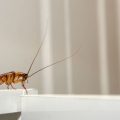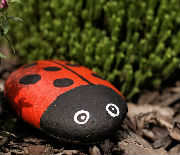It’s hard to find and even harder to get rid of bed bugs. For the past decade, the pests have developed resilience to the strongest chemicals on the market and continue to do so. However, there’s one thing they haven’t adapted to and that’s heat. What temperature kills bed bugs and their eggs instantly? That would be 50°C (122°F).
Heat eliminates bed bugs at all life stages in one go. Using heat also has the added benefit of avoiding chemicals altogether, as hot air can reach into wall voids, cracks, and crevices where bed bugs like to hide. You can use the property right afterwards. However heat treatment for bed bugs requires some preparation on your behalf.
You need to declutter your property, remove items sensitive to heat, open all doors, drawers, and cabinets so that the heat can penetrate effectively. Also, keep items that may harbor bed bugs inside, they must also undergo the treatment. These are just a handful of actions.
It’s important to know what to do before bed bug treatment. Each room has it’s specifics, but now you will learn everything you need to. This is how to prepare for bed bug heat treatment.
Table of Contents
How to prepare your bedrooms for heat treatment
As part of the preparation for bed bug heat treatment getting your bedroom ready is of utmost importance.
- Begin by moving all beds that require treatment at least two feet away from the walls. The pest control technician needs access to the entire perimeter of the room, i.e. any furniture, such as drawers pushed against the wall in the bedroom, needs to be pulled away to allow the technician to be able to treat around the skirting boards in the room.
- Hoover all the areas again after moving the furniture away from the walls, with high attention to the bottom of skirting boards or cracks (this is where bed bugs commonly hide and lay eggs).
- Before the treatment, you will have to remove all the bed linens and wash them at 60 -90C. Preventing further bed bug outbreaks requires a careful approach. When bedding or mattress is too heavily infested to be treated, you may have to dispose of it. A pest technician can help you determine the best method of getting rid of your mattress without the risk of spreading bed bugs.
- It is also necessary to remove any storage items or boxes stored under your bed.
- Deflate your airbeds, unplug them from the wall outlet, and make sure to completely drain your waterbeds. This is so the heat can get to the frame surfaces under and around the mattress.
- Get rid of any rubbish you’ve accumulated. Leaving it there is unnecessary because it will also start to smell bad after the intense heat. The ironic part is, it will likely attract more pests too. It’s also a good idea to vacuum a day or two before the treatment, especially if you have pets, as hair and fur can interfere with the equipment.
Learn How to Check For Bed Bugs
Don’t underestimate moving pieces of furniture away from the walls. This is one of the ways to prepare for bed bug heat treatment. If you fail to do so, you will get cold spots. Cold spots are areas that don’t get enough air circulation. The result is they don’t get hot enough, and the pests survive in them.
Taking items out of the room during treatment increases the risk of bringing bed bugs back in because those items might have bed bugs or eggs hidden in them. If you move them, you could accidentally spread the infestation to other areas. To prevent this, it’s important to leave everything in the room and keep items in their original spots. Basically, everything in the room should stay where it is, and items in corners should remain there too.
How to prepare wardrobes and clothes
Clothing is an excellent place for bed bugs to hide. That is why this is an essential part of heat treatment preparation. Clothes that have been exposed to the infestation need to be treated as well.
- You can leave clothing on hangers in your wardrobe, but it needs to be stored loosely. The heat will circulate around them and kill the bed bugs.
- All other clothing should be washed in hot water and dried at the highest setting. Items that cannot be laundered and dried (including coats and jackets) may need to be dry-cleaned. Do not place clothing in an infested room/area until the treatment has been completed and the bedbugs have been eliminated.
- Never place clothing into plastic bags as part of the bed bug heat treatment. The bag will not be affected by the heat, leaving your clothes prone to bed bug infestation.
How to prepare items sensitive to heat
So what items can stay and what can get damaged during heat treatment? As part of your bed bug heat treatment preparation, remove the items listed below:
- Aerosol cans and other pressurised containers, such as deodorants
- Glue
- Paint
- Lighters
- Flammable chemicals
- Fresh Food
- Wax products such as candles
- Cosmetics and perfumes
- Alcoholic drinks
- Medications
In addition, take out all delicate picture frames and pictures before treatment.
Removing aquariums and fish tanks is a must before any kind of pest control treatment, including heat treatments. You should also take out plants from the property.
As far as the question “Does bed bug heat treatment ruin electronics”, the answer can be yes and no and here is why.
Sensitive electronics often have delicate components that can be affected by heat or rapid temperature changes. Examples include computers and laptops, smartphones and tablets, televisions and monitors, gaming consoles, audio equipment, cameras, home medical devices like glucose monitors or CPAP machines, home automation devices, printers and scanners, modems and routers. It’s best to get these out of the room.
On the other hand, non-sensitive electronics are typically more robust and less likely to be affected by high temperatures. These devices are built to withstand a variety of environmental conditions. Examples include toasters, microwaves and coffee makers, regular light bulbs and basic light fixtures, basic clocks and radios, many power tools, fans and heaters, basic home telephones, and kitchen gadgets like electric can openers or blenders.
Still, it is a good idea to unplug all electronics around the house.
What to do after bed bug heat treatment
After the treatment has been completed, you can enter your home. Upon return, air out the treated areas for a couple of hours to cool them down.
As soon as the treatment is finished, you can begin cleaning. It is important to remove all dead insects and eggs from all your belongings when you are cleaning. Start by vacuuming all soft surfaces thoroughly. Focus on the outside crevasses, which are places where these insects burrow when the heat becomes unbearable.
You can use any regular cleaning product on hard surfaces. Don’t forget to clean the inside of every drawer, not just the outside of furniture pieces.
Don’t turn on the air conditioner or use the washer and dryer until the air temperature drops below 27 degrees Celsius (80 degrees Fahrenheit).
Following a bed bug treatment, you should still monitor your property for any bed bug activity.
After bed bug treatment, can you sleep in your bed?
Yes, you can sleep in your bed after bed bug treatment. Make sure the mattress and box springs are protected with covers. In case of surviving bed bugs in the mattress, the cover will prevent them from escaping.
How much does bed bug heat treatment cost
Depending on how many rooms you need to treat and how much time it takes, bed bug heat treatment costs vary. Small infestations are usually contained in a couple of rooms, at most, that need to be treated.
On average, treatments cost about £530. You’ll pay slightly more for heat treatment than chemical treatment.
During an initial inspection, a technician can provide you with an estimate of the cost, how long the entire process will take, and what you should expect during the service.
Moreover, the prep work required before the first session can be quite time-consuming but following the instructions is crucial for achieving full eradication.
Are you dealing with a pest infestation?
You don't have to be alone in the battle against pests. Hire a professional pest expert!
Call usTakeaways
- Treatment with heat is the best method of eradicating bed bugs;
- Bed bugs in all stages of their lives, including their eggs, can be destroyed by high temperatures;
- If bedding or a mattress is heavily infested, you may need to dispose of it;
- Certain household items cannot be exposed to heat, such as aerosol cans or any flammable chemicals;
- Even after heat treatment, you can still sleep in your bed;
- A full bed bug heat treatment is beneficial because it rids your home and belongings of bed bug infestations;










